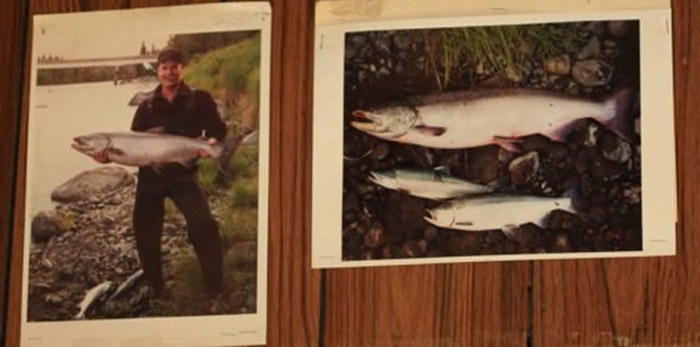
Kasilof River
Fish
The Fish
Four species of salmon—sockeye, king, pink and coho salmon—and rainbow trout, steelhead, char and whitefish spawn in the Kasilof River drainage. The river's king and sockeye salmon draw the greatest interest from salmon fishermen. And sockeye salmon—the species the sonar site produces estimates for—are by far the river’s most abundant.
Approximately 8,000 to 12,000 late-run king salmon and a second, but much smaller early king salmon run migrate up the Kasilof River each year. Many times more sockeye salmon return to the Kasilof, with runs averaging 958,000 fish and ranging from 500,000 to 1.7 million fish. A Kasilof River enhancement program that used to stock the river with hatchery sockeye salmon ended in 2004 and the last of the hatchery fish returned in 2008. Typically, more than 90 percent of Kasilof sockeye salmon enter the river by August 1.
Kasilof Fisheries
Kasilof sockeye salmon stocks are one of the most heavily fished in Alaska. The Kasilof River is the second biggest producer of Upper Cook Inlet sockeye salmon, representing nearly 20 percent of the area's commercial sockeye harvest and sometimes considerably more. In 2006, Kasilof River sockeye represented an estimated 55 percent of the total commercial catch, with fishermen netting a record harvest of 1.2 million Kasilof sockeye salmon. The annual average has been about 600,000 per year over the last 10 years. Kasilof sockeye salmon also support popular dipnet and set gillnet personal use fisheries. A limited amount of sport fishing for sockeye also occurs in the river, but sport fishing in the Kasilof primarily targets early run king salmon. Personal use permit harvest data show set gillnet sockeye harvests peak between June 17 through June 23 and dipnet harvests peak between July 11 through July 21. ADF&G manages the Kasilof River sockeye fishery under a biological escapement goal, which as of 2011 was set at a range of 160,000 to 340,000 fish.


